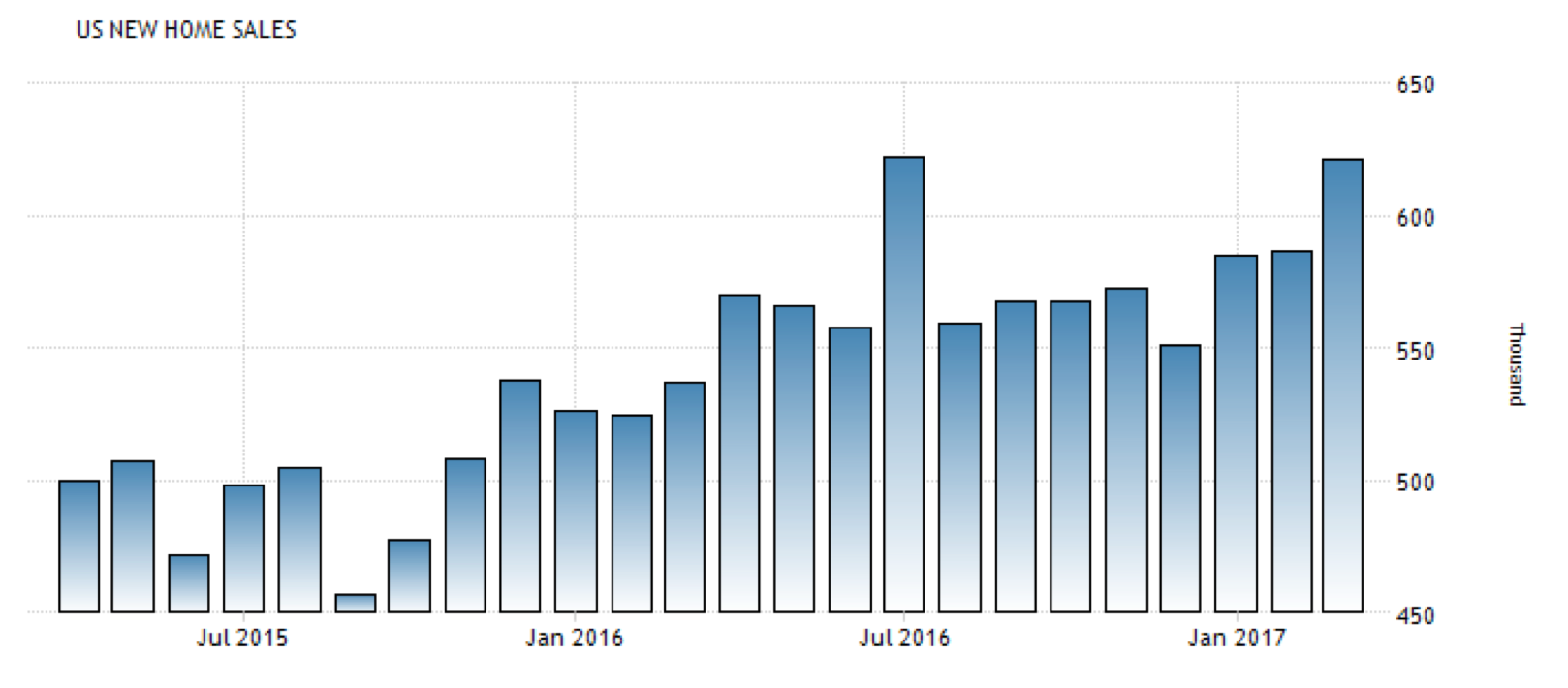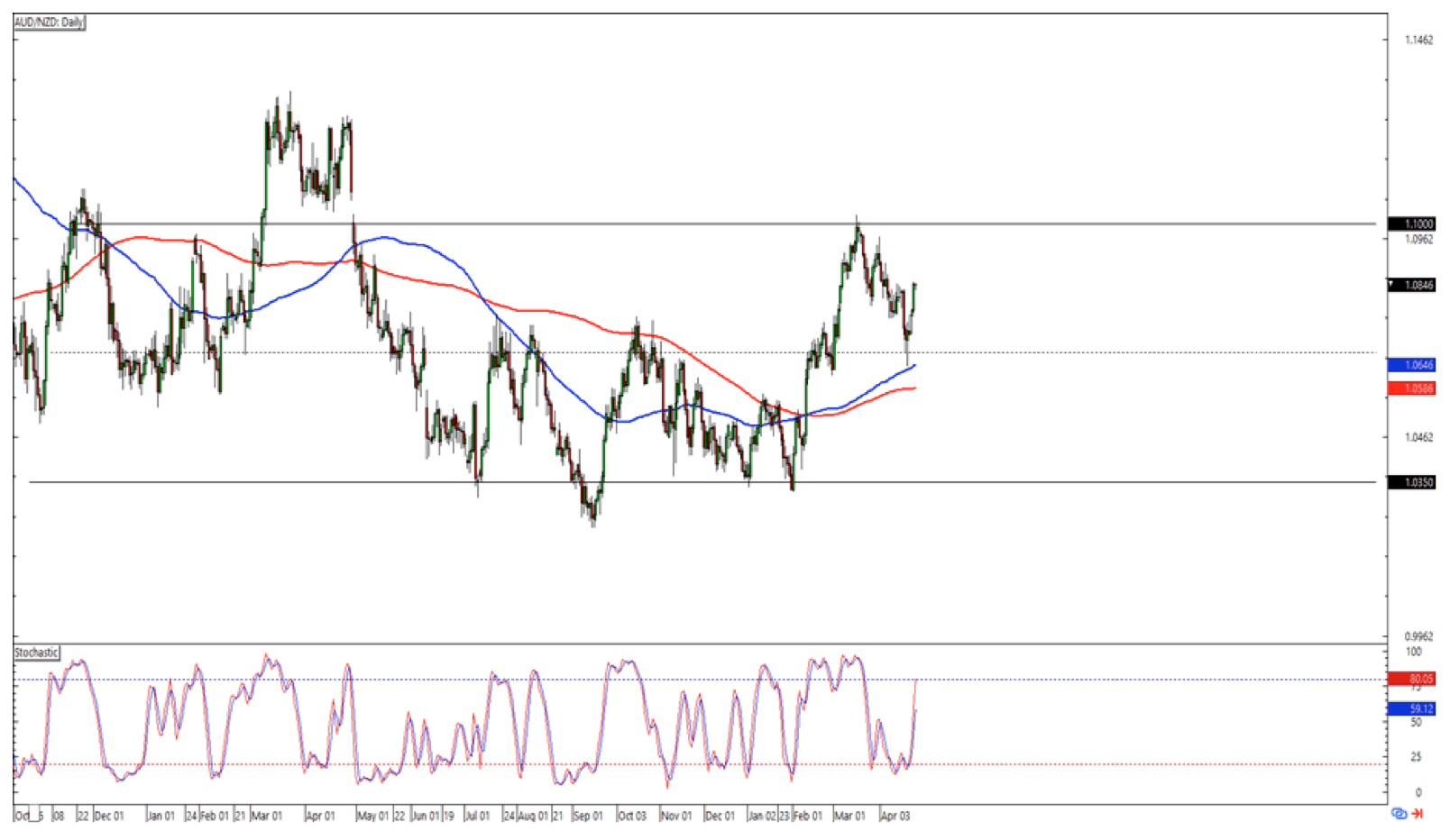Daily Insights Report 26/04/17
- 26 Apr 2017
Sales of new homes in the US showed to have reached an 8-month high. Sales of new single-family houses in the US jumped by 5.8% month-over-month to a seasonally adjusted rate of 621,000 in March 2017 – which is above what the market had predicted. This is the highest level seen since July 2016, as sales rose mostly in the Northeast and in the West of the country. How this data has changed in recent times can be seen in the chart below.

– The Euro had hit a one-month peak against the Yen after the outcome of the first round of the French presidential election. Since the beginning of the year, the Euro has oscillated between 1.04 to the current value of around 1.09. While the French election conclusion would restore some confidence in the currency and steer away from political risk (provided that there is no surprise), this stability may be short-lived. Italian elections could reintroduce some political risk later this year.
– The Dollar rose another 1.3% against the JPY to reach a two-week high of 111.12.
– The AUD was 0.4% weaker against the USD to reach $0.7538, with inflation data scheduled to release later today.
– The CAD was 0.5% weaker at C$1.3567 per USD which is near the weakest value seen in nearly two years. This comes after tariffs have been imposed on Canadian lumber imports to the US, in an effort to make US output more competitive.
Commodities
– There was some support for stock markets from a late rally for oil prices. Brent crude settled at $52.10 a barrel, up 1.0% on the day, after earlier reaching $51.30 which is the lowest it has seen in more than three weeks. West Texas Intermediate (WTI) crude on the other hand was up 1.2% in late trading to reach $49.80 per barrel. Global crude inventories remain high, and at the same time the US shale industry has been reignited by the increase in fuel prices. These combining factors are causing fluctuations in the price of oil.
– Gold declined by more than $11 to reach $1,126.3 an ounce. This is a two-week low for the price.
Australian Dollar (AUD)
Consumer Price Index (Q1)
Headline inflation pressures are likely to be increasing in Australia. The quarterly change in consumer prices was likely subdued, with the not seasonally adjusted CPI increasing just 0.3% compared with the previous quarter’s 0.5% gain. Year-over-year growth likely increased to about 1.9% due to rising commodity prices. Underlying inflation is contained by moderate wage growth and rising debt. This will keep the Reserve Bank of Australia’s preferred measure of inflation below the 2% target through 2017.
Technical Analysis
AUDNZD
Looking at the daily chart of this currency pair, we can see the pair is currently around the 100 and 200 day SMA. Some may believe that the pair is heading for the 1.10 parity level. Short-term traders who believe in this may be able to enter into trading positions currently to take advantage before the price reaches this level. A conservative approach to this currency pair would be to wait for the pair to reach the 1.1 level before opening positions. Similarly, an overbought stochastic signal would be another motivating factor for trading this pair.


